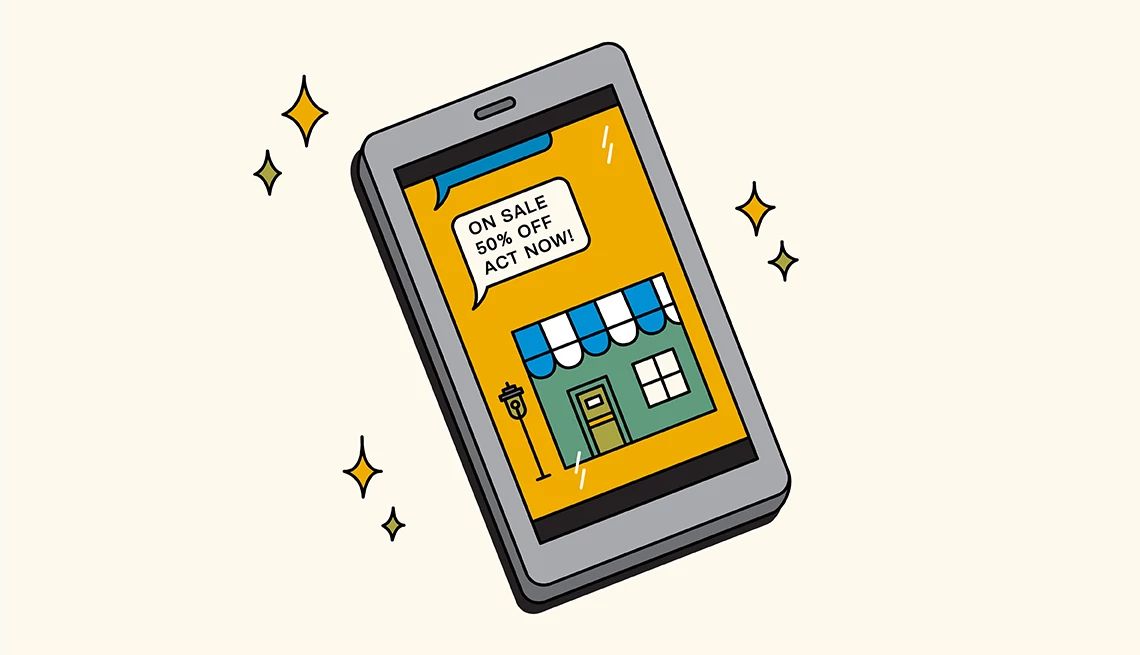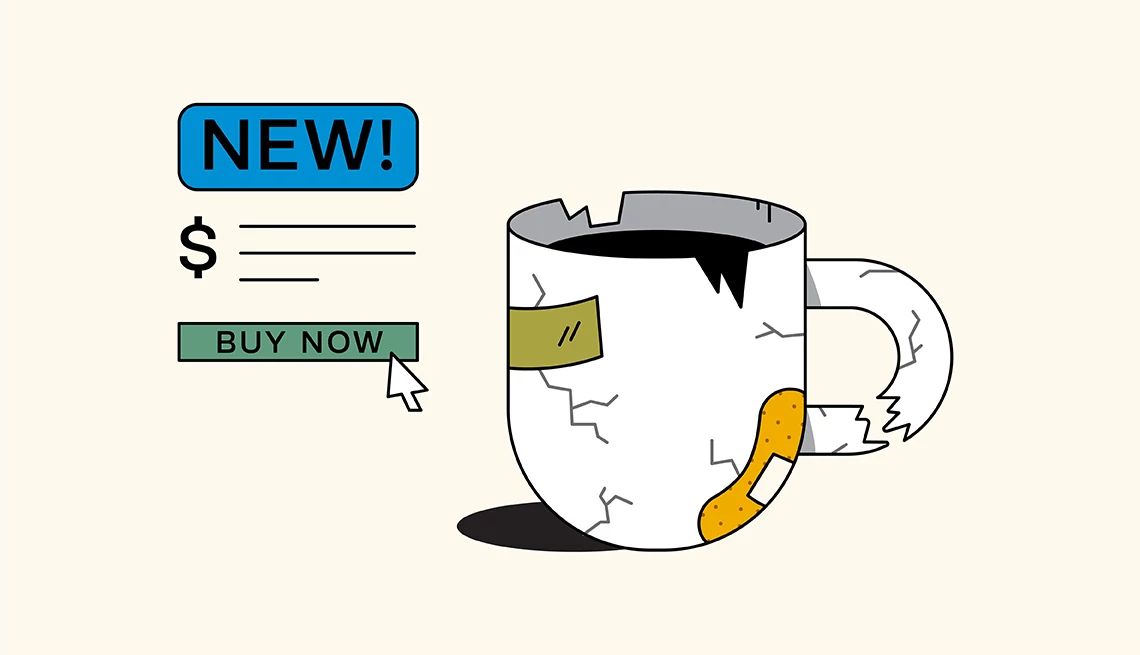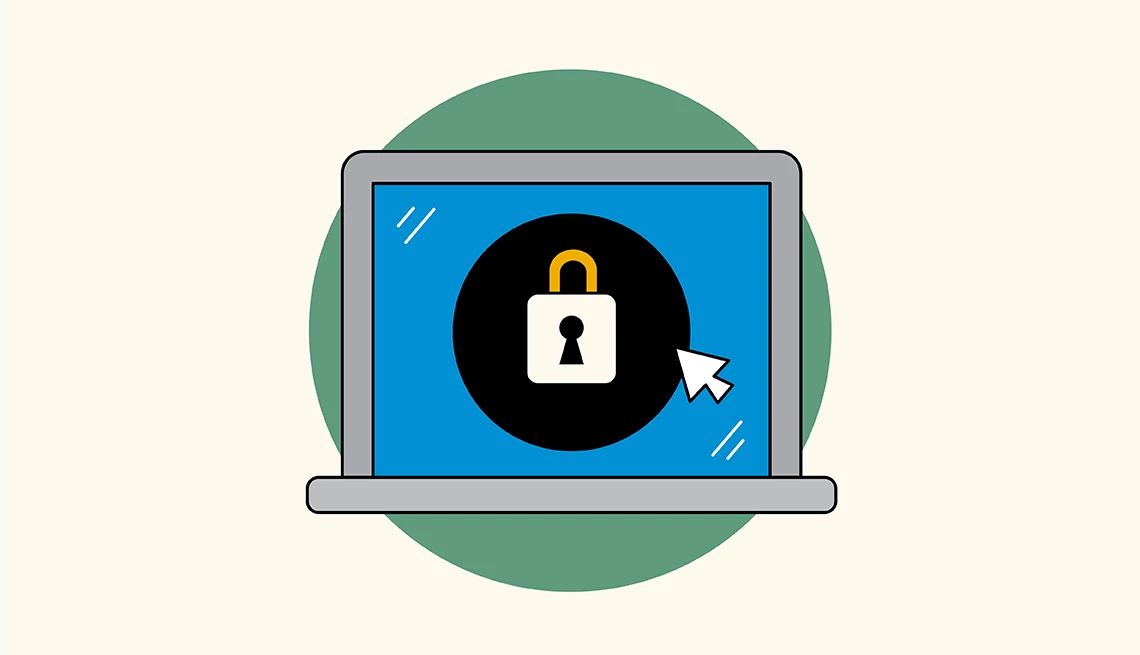AARP Hearing Center


Those of us over 50 remember what it was like to shop before you needed a password or a digital coupon code just to buy toothpaste. But now that stores live in our pockets and you can order a couch from your smartphone, it’s worth having a few tools to navigate the chaos.
Here is some expert guidance on how to spot real deals, avoid scams and temptation, and shop online like a pro — no tech degree required.
1. Use Google or Yahoo to compare prices
Before you make a purchase, take a moment to check whether you’re truly getting a good deal. “I always start with Google Shopping or Yahoo Shopping,” says consumer savings blogger Trae Bodge. Those sites work like giant digital catalogs, showing who’s selling the item, how much they’re charging and whether there are any special offers, like free shipping.
Let’s say you search for a “Braun Series 7 razor” on Google Shopping. You might see it listed for $170 on one site and $80 on another (though the lower price was “refurbished,” so read descriptions carefully). Some results also show which stores have the item in stock near you. “This quick step can help you spot inflated prices and uncover hidden deals,” says Bodge, without opening a dozen tabs in your web browser.
2. Cover your tracks
Online retailers watch what you search — and sometimes, the more you look at an item, the higher the price climbs. “By opening a private browser window,” says consumer and money-saving expert Andrea Woroch, “you can shop incognito to bypass cookies” — those digital breadcrumbs that online searches leave — “and grab legitimate low prices.” That can be especially helpful when making a big purchase like a mattress, laptop or major appliance.
When you open an incognito window, the retailer can’t track your previous visits or web browsing history, meaning you’re shopping with a clean slate. In Chrome, go to the File menu and click “New Incognito Window.” In Safari or Firefox, choose “New Private Window.”
3. Install a deal detective in your web browser
Don’t be intimidated by browser plug-ins like Rakuten, PayPal Honey, RetailMeNot and CouponCabin’s Sidekick. “They’re like little money-saving assistants that follow you as you shop online,” says Bodge. These digital tools are easy to install and quietly scan for deals while you shop. “They pop up when there’s a coupon or cashback offer available so you don’t have to hunt them down yourself,” she says. Let’s say you’re shopping for vitamins at Walgreens.com. A tool like Rakuten might appear in the corner of your screen and say “Activate 6 percent cash back.” That means Rakuten will send you 6 percent of the money you spend via check, PayPal or American Express Membership Rewards points just for clicking one button. Meanwhile, Honey automatically tests coupon codes and applies the best one. “It doesn’t work all the time,” Bodge says, “but when it does, you’ll wonder why you ever paid full price.”
Caveat: Some of these companies say they collect and share your personal information, such as your name, postal address and phone number, with third-party service providers and affiliate partners.
4. Shop at the right time
Timing matters in surprising ways. “Shopping strategically means shopping in the right season, day or even hour,” says Barbara Ginty, a certified financial planner in New York. Grills are cheaper in April and May, before summer barbecue season arrives. Linens go on sale in January. Winter coats drop in price in March, when the weather starts to warm. And tech deals show up around back-to-school season and Cyber Monday. “There’s a rhythm to the retail calendar, and once you spot it, you stop overpaying for just about everything,” Ginty says.
Padding the calendar helps, too. Recent data from Expedia says you’ll get the best deal on airfare by buying early — from one to three months in advance of a domestic flight, and 18 to 29 days for international flights.


5. Tell your favorite retailers to text you
Subscribing to a store’s text messaging can get annoying, but it can also provide access to special savings. Because retailers know that texts are harder to ignore, they often sweeten the deal to make it worth your while. While email signups might give you access to 10 percent to 15 percent discounts, retailers like Kohl’s, Old Navy, Macy’s and Michaels frequently offer 20 percent to 30 percent off just for signing up for text messages. And, as Bodge says, “You can always cancel. So do it once, grab the deal and reply STOP right after if you don’t want more messages.”
6. Track prices to score true savings
As you can see, retailers love to play games with prices. One day something’s “on sale” for $59.99, the next it’s “on sale” but for $64.99. How to tell whether you’re getting a good deal? That’s where free tools like CamelCamelCamel, Keepa and Honey’s Droplist come in. “These websites are smart deal trackers that let you see the full price history of an item, so you can tell if it’s truly a deal or just marketing,” says consumer advocate and radio host Marsha Collier. You can also set alerts to receive an email or text when the price drops to a certain amount of your choosing.
7. Deals are in the (search) details
Collier has a golden rule for online shopping searches: “Be very specific to get what you want,” she says. So rather than search for “pretty blue dress,” you’d search for “Talbots linen shirtdress navy size 12”; instead of “world map,” you’d narrow down to “framed schoolhouse pull-down world map 1960s.” The more specific you are, the more targeted the results.
This advice applies when shopping on Amazon, Google, eBay and retailer websites. “Accurate terms can cut your search time in half and help you uncover items that aren’t buried in ads or clutter,” Collier says. You might also find better prices, because specific search terms often bypass paid product placements.
8. Buy gift cards at a discount and use them like cash
Before you shop, check to see if someone is selling a store gift card they didn’t use. Sites like Raise.com, CardCash and Gift Card Granny let people resell unused gift cards, often at a discount of anywhere from 5 percent to 25 percent. That means you could snag a $100 Lowe’s gift card for $85. And, if you can use a discounted store gift card to purchase a product that’s on sale, “you’re basically giving yourself a secret double discount,” says Ginty. (Some retailers don’t accept coupons or offer cash back on purchases if you pay with a gift card.) This trick can work beautifully for stores like Home Depot, PetSmart and Ulta.
Just make sure the gift card is “verified” and doesn’t expire soon.




































































You Might Also Like
How to Shop Online Using AI | Members Only
Uncover deals with these three AI-powered assistants
Insider Secrets from a Top Realtor
Advice for both buyers and sellers on how to have the best success in the housing market
Gretchen Rubin's Secrets of Adulthood
The best-selling author went from coach to cheerleader of her young adult daughters